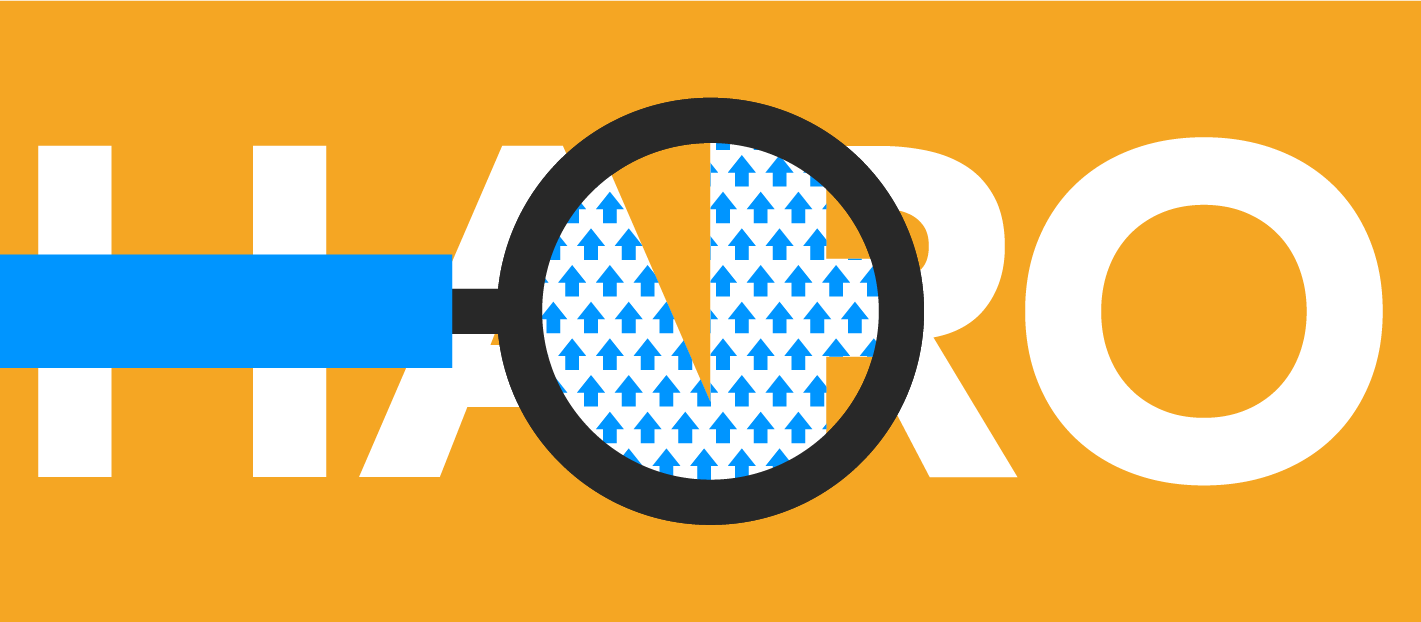
When times get tough, you need to focus on building up your most important channel of all: your website. While your site is responsible for the vast majority of sales and leads, it doesn’t always get the attention it deserves. Marketers sometimes abandon website tasks in favour of newer, cooler marketing channels.
In this post, we’re detailing 22 ways to improve your website ranking so you can bring in even more high-quality traffic. When the market takes a dip is actually the perfect time to work on your site, because you’ll be prepared for significant growth when things start turning up.
Let’s build up a strong foundation for our marketing with a website that ranks
1. Create new blog content

If your site ranks for your most important keyphrases, it can be easy to get lazy and think that you’re all done creating new content. Why create new posts when you’re already ranking?
Well, if your site doesn’t have new content every month (or at least every quarter), it is definitely possible to lose your search results positions for different keyphrases. The latest, freshest content isn’t proven to outrank older posts immediately, but it does show Google that your site is still active, which helps all of your rankings overall. Creating new content means you don’t get penalised for having an inactive, outdated website.
2. Update old blog content

Another task you can do is to update some of your old blog posts. Similar to adding new content, updating posts is a sign that your site is active and of high quality. It impacts your overall domain score and many of your content rankings, not just the ranking of the post you update.
But since strategic updates can yield fast SEO results, you might as well prioritise the content updates that are most likely to see improvements to individual rankings.
Here are the posts you might want to prioritise (use an affordable SEO tool like Mangools or Ubersuggest to discover and track your rankings):
- Posts that used to be on page 1 of Google SERP but have since dropped off
- Posts that have always been on page 2 or 3 of Google SERP
- Posts that don’t have a target keyphrase but that you could easily optimise to a fit a keyphrase
- Posts that have a target keyphrase that is too challenging to rank for (on page 4+ of Google SERP) and that you can change to target a lower competition keyphrase
3. Get backlinks from influencers and bloggers

Successful backlink outreach for SEO can have a massive impact on your overall website ranking. But you can’t just wait for people to link to your site. You need to be proactive.
Reach out to influencers and bloggers in your niche and ask them to link to one of your top pages or pieces of content. They might want to do this in exchange for a link placement fee, free product or free subscriptions, or (if you have an extensive email list or social media following) a shout out.
4. Improve your internal linking

Internal links are those that point from your posts and pages to other posts and pages on your site. Your site probably doesn’t have as many internal links as it could. Internal links are great for user experience, SEO, and thus your site ranking.
Create a spreadsheet with all of your content, not just blog posts but pages too. Go back to the older content and link to some of the newer content. Also, review your newer content to see if you should add some links to older content that you forgot about when creating the new pieces.
5. Create a content hub

Some SEO experts think that content hubs are the future of SEO. Content hubs can often see higher rankings than standard blog posts. If you’re unaware, a content hub is essentially a collection of articles with a link structure that puts the articles in a hierarchy below the main hub. Hotjar’s Google Analytics Glossary is a great example.
6. Change the architecture of your website

When was the last time you reviewed the architecture of your website? Does it still make sense? Is it as helpful as it could be?
Often, what ends up happening is we continue to add pages to our website over time, without really considering how they flow together.
You don’t necessarily have to undergo a full website redesign to improve your site architecture and see an uplift in conversions. Instead, consider the following:
- De-clutter your menu with subpages
- Update page and subpage structure
- Remove pages with no search rankings and few sessions (check sessions and engagement before killing pages)
- Add new pages based on customer research
7. Update your citations

Having accurate citations is also important for your Google website ranking. Citations are the business information that’s spread all around the internet: your Google Business page, your Yahoo! page, your Bing page, your Yelp profile, etc. Even if there are accounts you don’t actively use, you should still seek out all the places where your business info is listed and make sure to update it yearly.
8. Get more online reviews

Website reviews can impact your site ranking in several ways:
- Send higher volumes of referral traffic to your site
- Help your website get picked up in Google Map searches (for Google reviews)
- Show Google that your business and your site are high quality and trustworthy
Even if you don’t have a local business, reviews help your domain authority. Ask customers to review you on sites like Google, Yelp, and Trustpilot.
9. Organically optimise for keywords that do well with paid search

Which keyphrases are working well for you with paid SEM on Google and Bing? Check out your paid search accounts and see which keyphrases get the highest click-throughs, have the highest number of impressions, and lead to the most conversions.
These keyphrases represent significant opportunities for organic SEO content. If it’s a high-intent keyphrase, consider making a page with long-form SEO friendly content at the bottom. Otherwise, you can create a standard blog post.
10. Add alt tags to all images

Alt-text is a field setting on any image you upload into your CMS (or you can add it manually). It describes what the image is and defines its purpose. If the image link ever breaks, the alt text will display. Including alt text in your images is something Google likes because it also helps the visually impaired, as text readers will read the alt text out loud.
11. Make sure every page and post has metadata

In the busy rush of creating new web pages and blog posts, it can be easy to leave out the metadata. This consists of:
- The document title
- The meta description
- The target keyphrase
Your CMS will likely autofill some of these. Make sure to double-check that this content is SEO-friendly yet easy to understand.
12. Convert pages into posts and vice versa

It’s a mistake to assume that your next blog post idea should be a blog post and not a page. It’s also a mistake to assume that a keyphrase should be targeted in a page instead of a blog post. The lesson? Don’t assume — zig where others zag.
For example, let’s say that you create a page for a target keyphrase, and three months later, you discover that it’s on page 5 of Google SERP. Then you notice that it’s not really offering anything unique compared to what’s on page 1. There aren’t any long-form posts for that keyphrase on the SERP. If you create a killer long-form blog post (and redirect that page to it), Google might award you with a top spot, because you’ve brought something new to searchers.
13. Make sure that all link text is descriptive

Do you have a plethora of “click here” links in your posts and pages? Those text-based links are “non-descriptive” because they don’t describe what the link takes you to.
Update links in your posts and pages to describe the resource. That might be something like “SEO checklist” instead of “check out this list.” Or “guide to ecommerce marketing” instead of “tips and tricks.”
This is especially important for your internal links.
14. Improve the structure of all URLs

Your link structure is another nitty-gritty change you can make to improve your website ranking in Google.
Look for posts and pages whose URLs:
- Are more than 5 words long
- Don’t use hyphens to separate words where spaces would usually go
- Don’t include their target keyphrase
Then update the link so that it is short, uses hyphens as spaces, and uses the target keyphrase. Make sure you understand and set up redirects on the links so that you don’t lose any backlinks that you already had.
15. Add more images to posts and pages

Countless factors can improve your site ranking and the ranking of individual pages. While images aren’t a silver bullet, they are a known factor. Do you have any posts or pages that have two images or less?
Go ahead and add relevant images, and don’t forget those alt tags.
16. Add structured data to posts and pages

You’ve seen search results with structured data before. Think of those boxes at the top of Google that list out the top movies of the year when you search “Best movies of 2019.” Or those little recipe cards, or even shopping results pages.
Using H2 subheadings in your article is a form of structured data because you’re telling search engines what the structure of your article is. That way, Google or Bing can take your content and make a snippet out of it. This guide from Google has even more ways to add structured data.
17. Answer relevant HARO queries

Help a Reporter Out is one of the easier ways to acquire high-quality backlinks for your site, which has a major impact on your entire site’s domain authority. Reporters from different outlets and blogs write queries and send them out to the HARO network, which is an email that gets sent out twice a day. In the emails, you can check the queries in categories relevant to your company.
Most of the time, the reporter will link back to your site when they quote you.
18. Directly pitch reporters and outlets

While HARO is a great way to pick up free press and backlinks, it’s of course not the only way. Learn which reporters, contributors, and columnists regularly interview companies like yours, and directly reach out to them via email. You can write to them with a story idea, or simply let them know that you’re available to answer questions about a handful of specific topics.
In your email, list out the topics that you can comment on as an expert and also include a link to any press you’ve gotten in the past. You can find email addresses using a combination of LinkedIn, Twitter, and contributor pages on the outlet’s site.
19. Guest blog for sites with higher domain authority than yours

You can also gain backlinks via guest blogging. Get to know which blogs in your niche accept guest posts. You can find great blogs by typing in relevant search queries and hashtags into Google, Pinterest, and Twitter. When you see a blog that has multiple authors, check some of the author bios to vet that some of them are guest contributors.
20. Write sponsored content for relevant sites with high domain authority

Reaching out to reporters and bloggers can be a lot of work. Maybe you’d rather pay to save time? There are probably at least a dozen sites in your niche that accept sponsored content. You can get a backlink in your sponsored post. Typically, it can cost anywhere from $200 to $1000 to get your content published on a quality site with active readers.
21. Pitch podcasts as a guest

Being a guest on a podcast is another way to get high-quality backlinks to your site since most podcast hosts will include a link to your site or freebie offer in the show notes. Work out which are the best podcasts in your niche, find their email addresses, and and reach out with a clever, personalised pitch.
22. Improve your website’s speed

Bounce rate is a factor for your website’s ranking and the ranking of individual pages. Slow website speeds increase bounce rate because people are impatient and don’t want to wait for pages to load. To improve page speed, you can reduce the file size of images, remove any unnecessary website plugins, and improve your server response time.
We spend a lot of time making sure that our product is as light and quick on your website as possible. We’ve shared everything we know about reducing the impact of Javascript on your website before on our Blog.

